Masbia in the NYT: 1.5 million New Yorkers can’t afford food. Pantries are their lifeline.
Posted on: October 20, 2020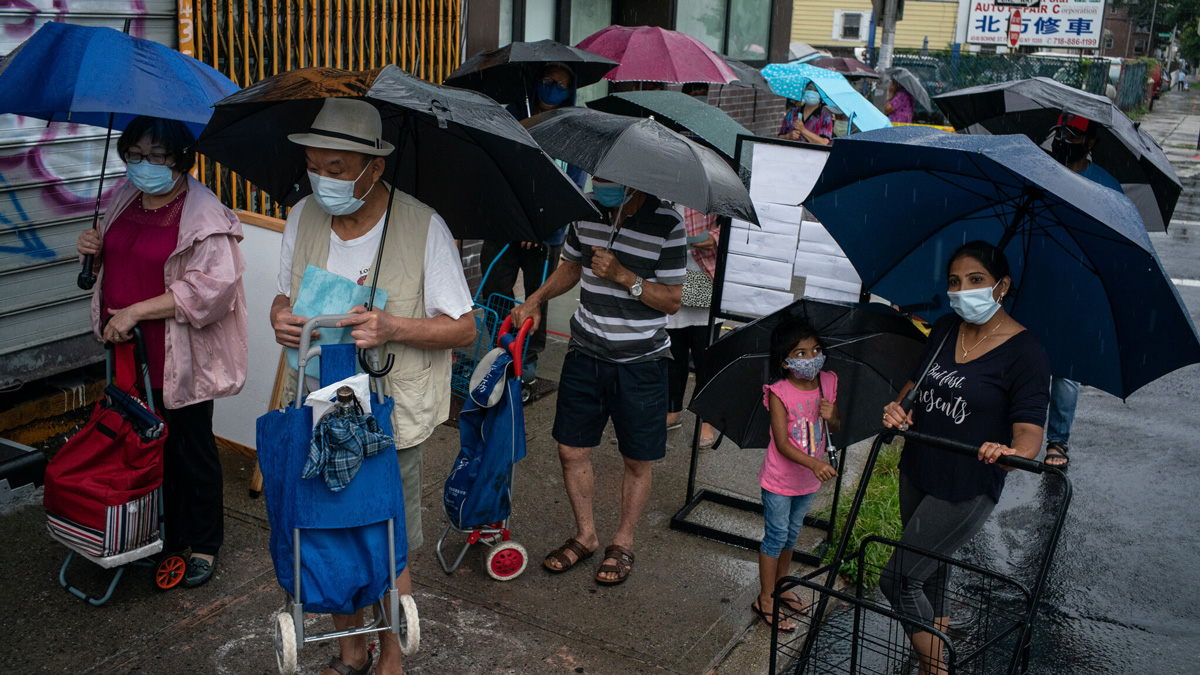
An interactive story, written by Nikita Stewart, depicting New Yorkers’ struggle to survive, and habit changes to overcome the hit of the covid-19 pandemic in the big apple. Families are portrayed by the lens of photographer Todd Heisler, in their day by day, heading to Masbia, and other similar nonprofit pantry organizations, during the pandemic.
Tens of thousands of New Yorkers have shown up at the city’s food banks since the pandemic began. People who were already going to the pantries have grown more reliant on them. But there is relief and hope when they are at home cooking.
New Yorkers are accustomed to lines. Staggered on subway platforms. Clogging the sidewalks in front of Broadway theaters. Snaking outside public pools in the sticky summer heat.
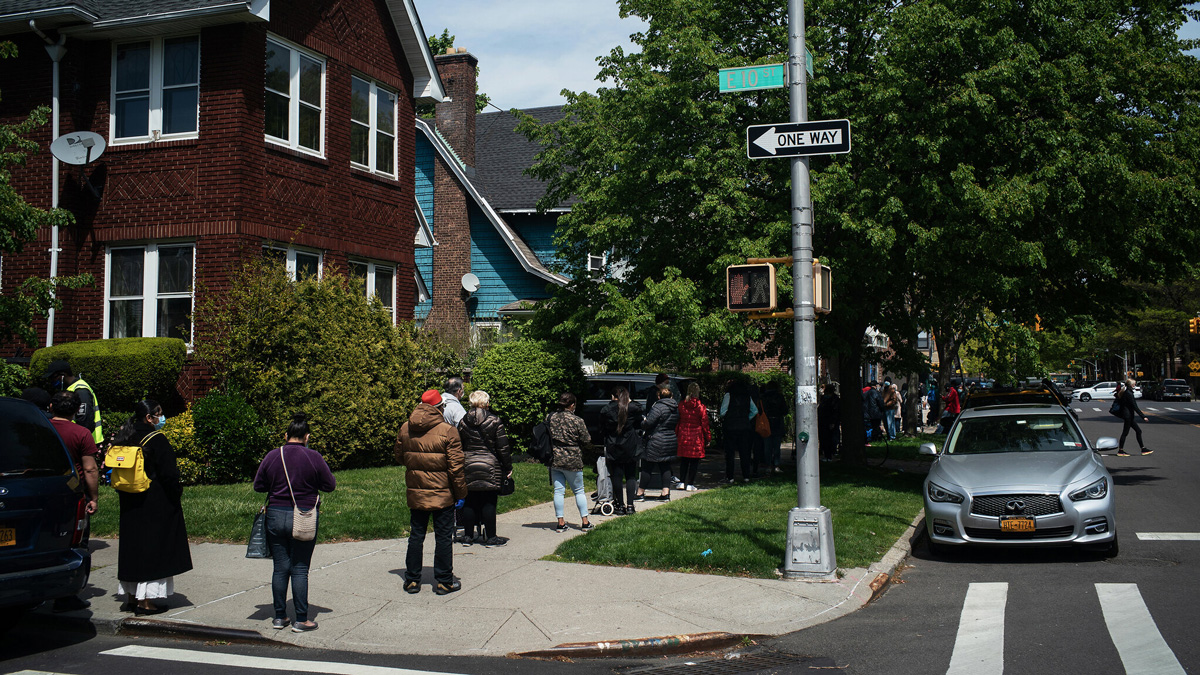
As the pandemic settled into the city, hunger drove tens of thousands of New Yorkers into another type of line — food pantry lines, many for the first time. An estimated 1.5 million people cannot afford food.
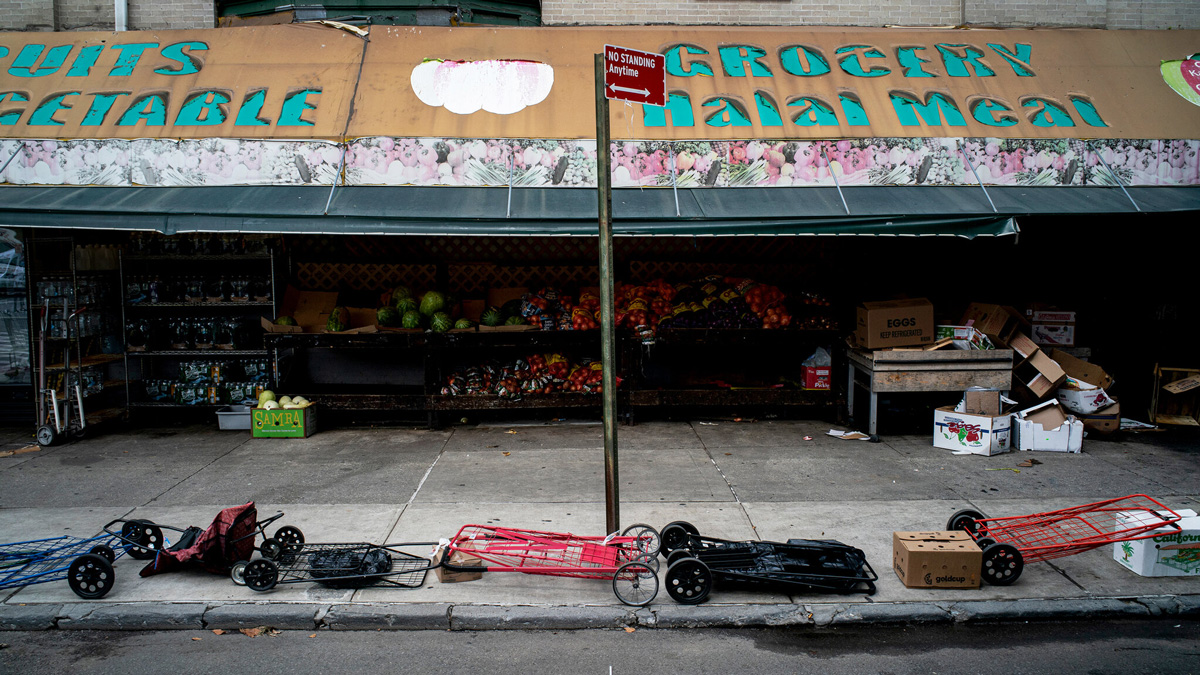
While waiting in line can be emotionally draining, receiving food can bring relief — smiles so full that they bubble up like a pot of water on a stove.
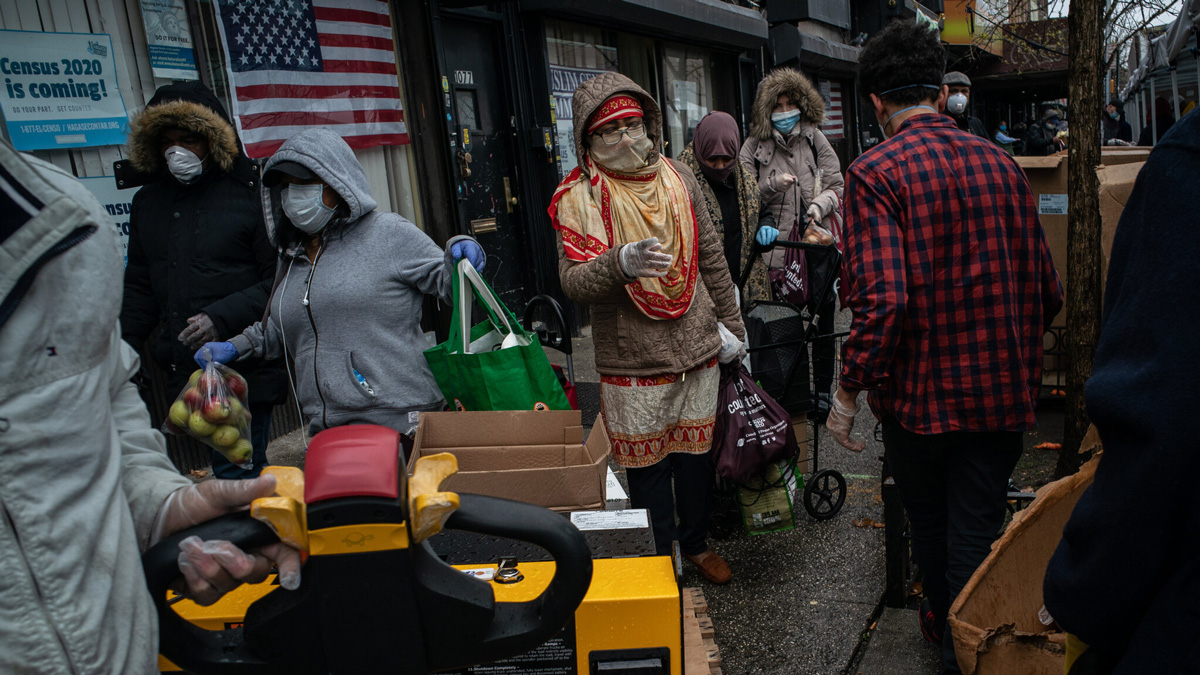
We spent some time with New Yorkers who are relying on food banks to get by. They showed that at a time when we feel that nothing is in our control — not even the air we breathe — food is still comfort. Food is routine. Food is family.
José and Leyla sway to music as they cook a dish from their native Peru.
Bensonhurst, Brooklyn
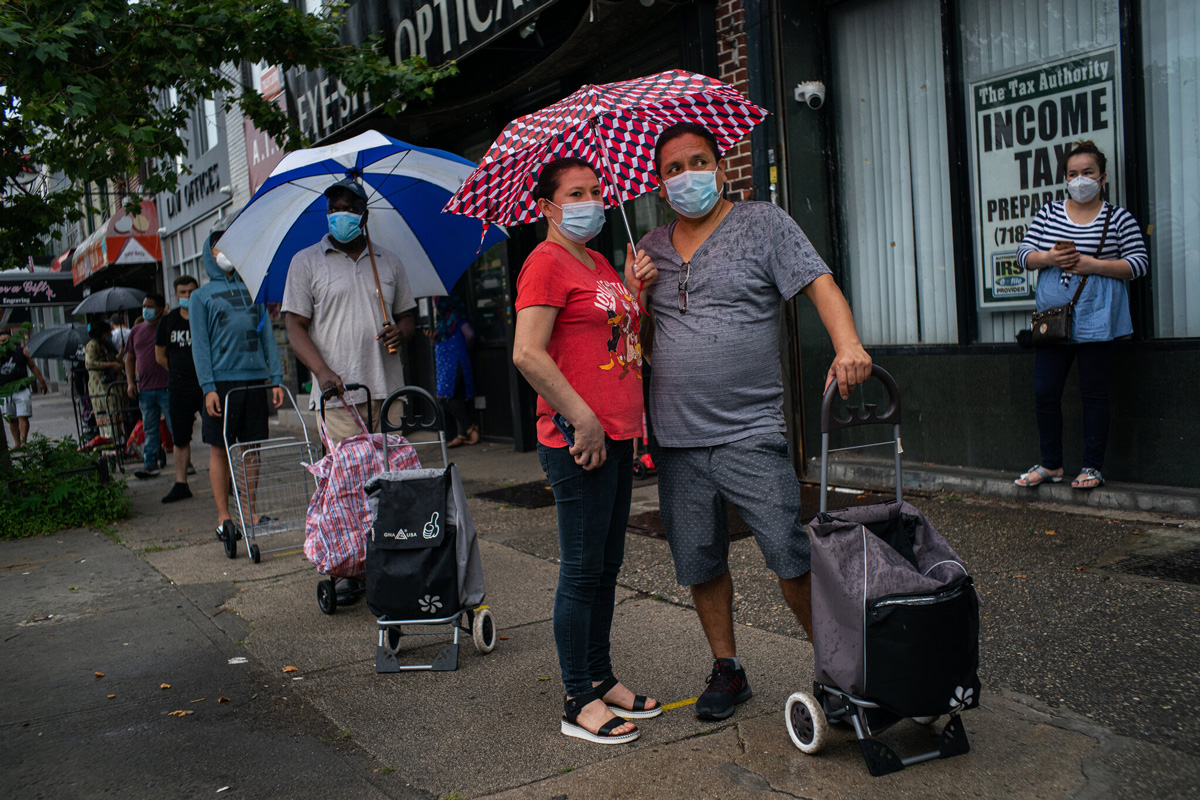
“That’s for poor people,” José Gavidia, a web designer, told his wife, Leyla Moale, in March.
The couple had been walking down Coney Island Avenue when Leyla spotted a food pantry called Masbia of Flatbush. She told her husband that they should get in line, too. “Do you think we are rich?” she asked him in Spanish.
His $30,000-a-year freelancing business had evaporated overnight, and Leyla was shouldering their financial responsibilities with her earnings as a restaurant line cook.
“She pushed me: ‘We have to go. We have to go,’” said José, 45.
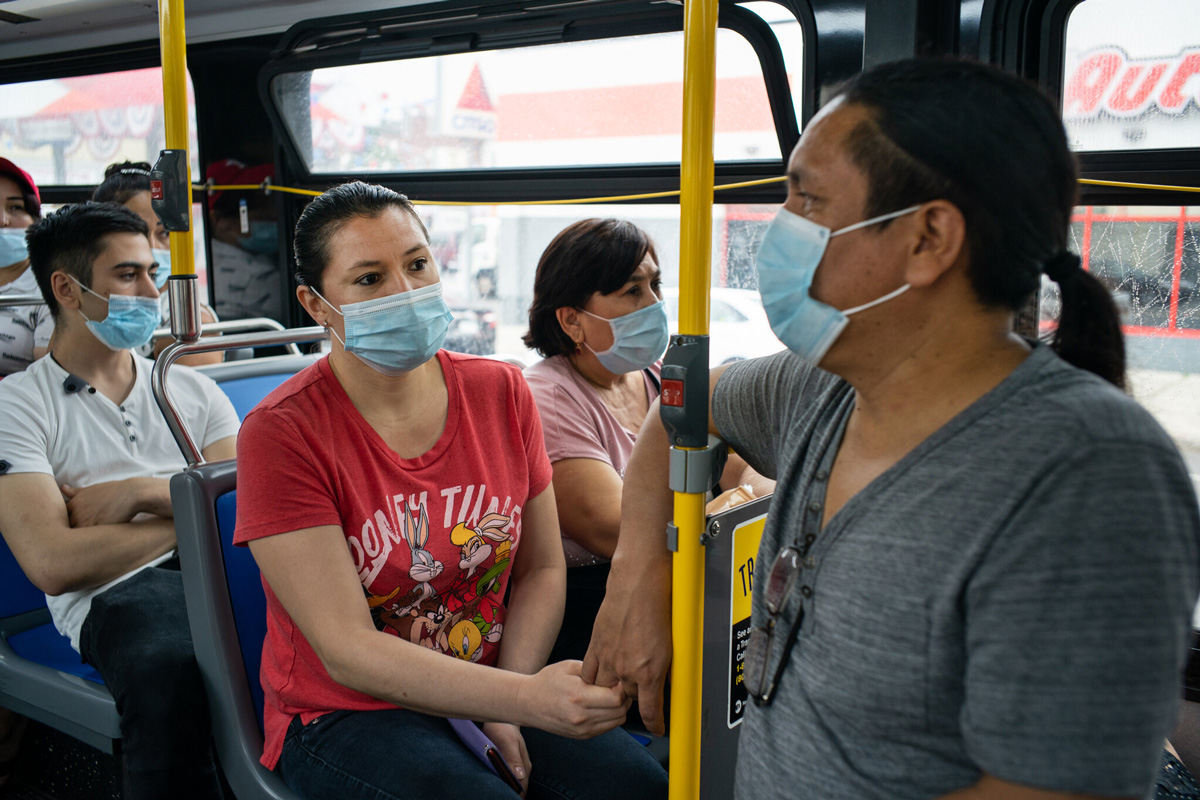
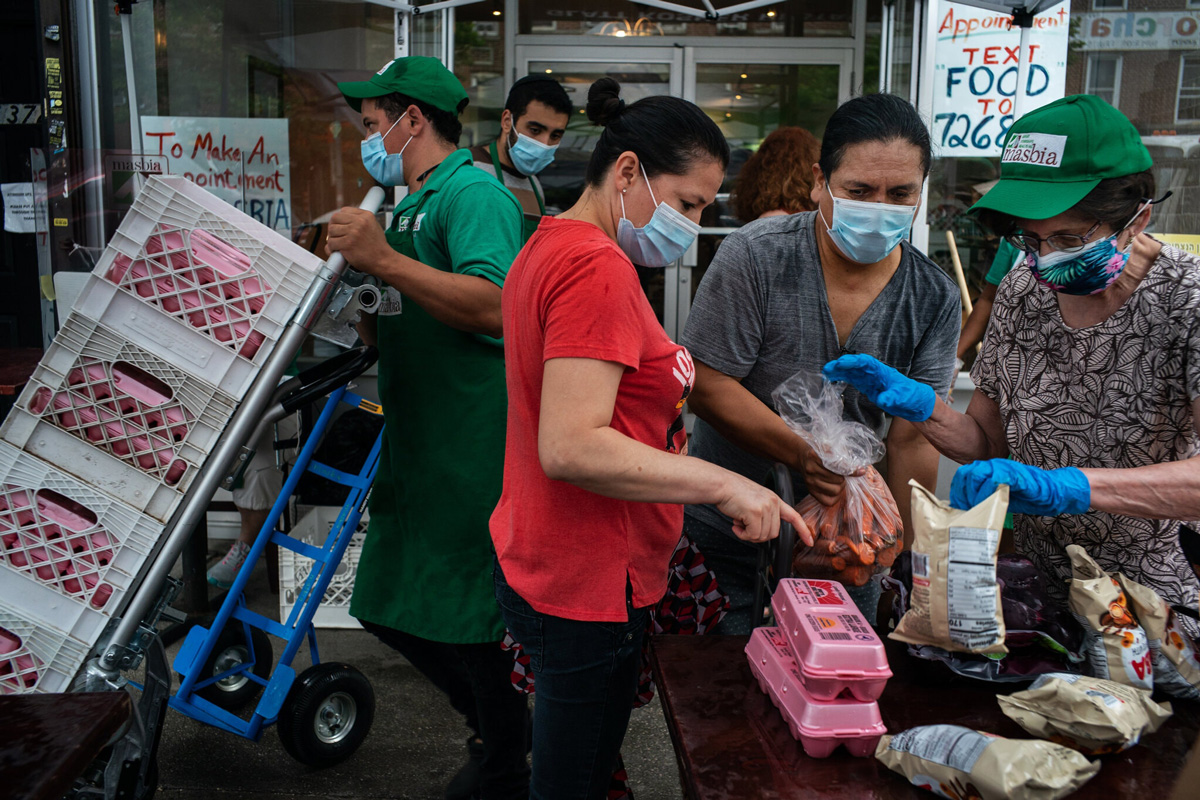
The first time they went to the pantry in March, the line was startling and intimidating, wrapping around an entire block.
Going to the pantry quickly became part of their shared schedules. One day after they had stood in line for about an hour, José said with a chuckle: “We got carrots. We got chicken. Eggs. What else? Oil. What else? I don’t remember. Oh, some chips, which is good because my wife doesn’t let me have chips. ‘No, that’s too expensive,’” he said, imitating her.
Leyla chimed in with her rule about snacks: “We make only popcorn at home.”
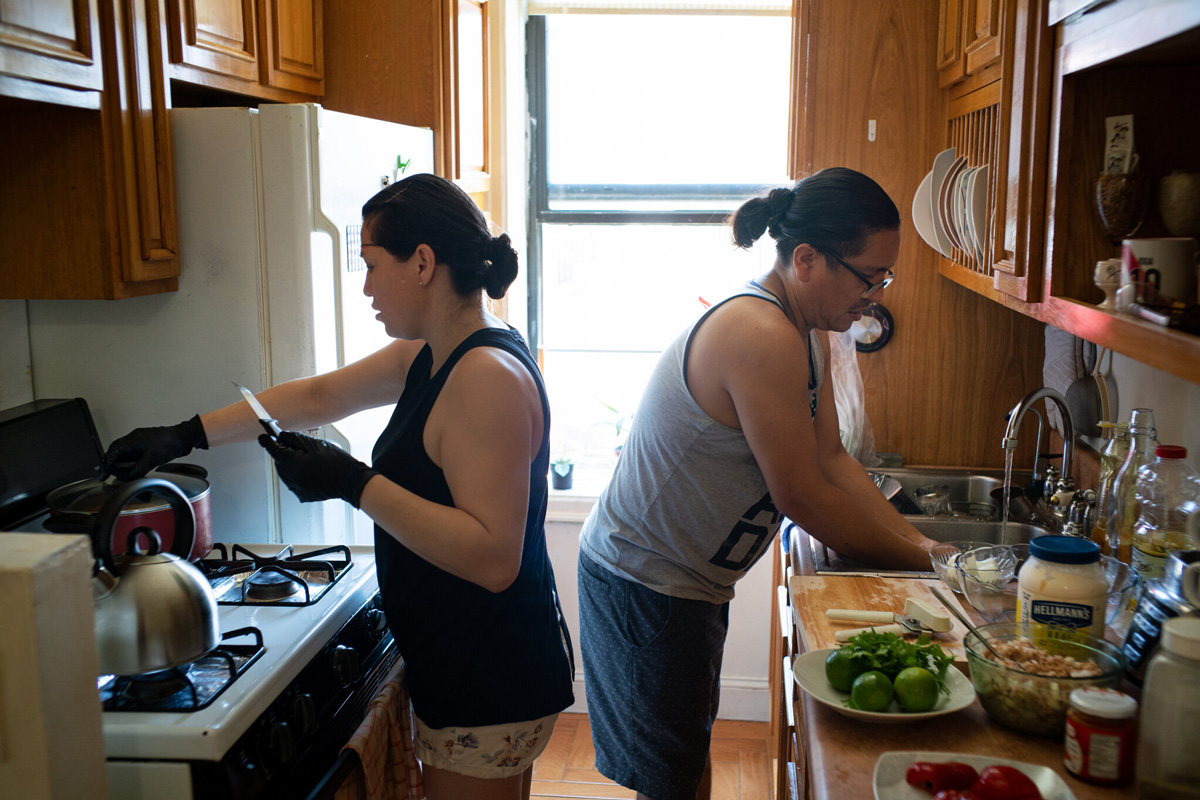
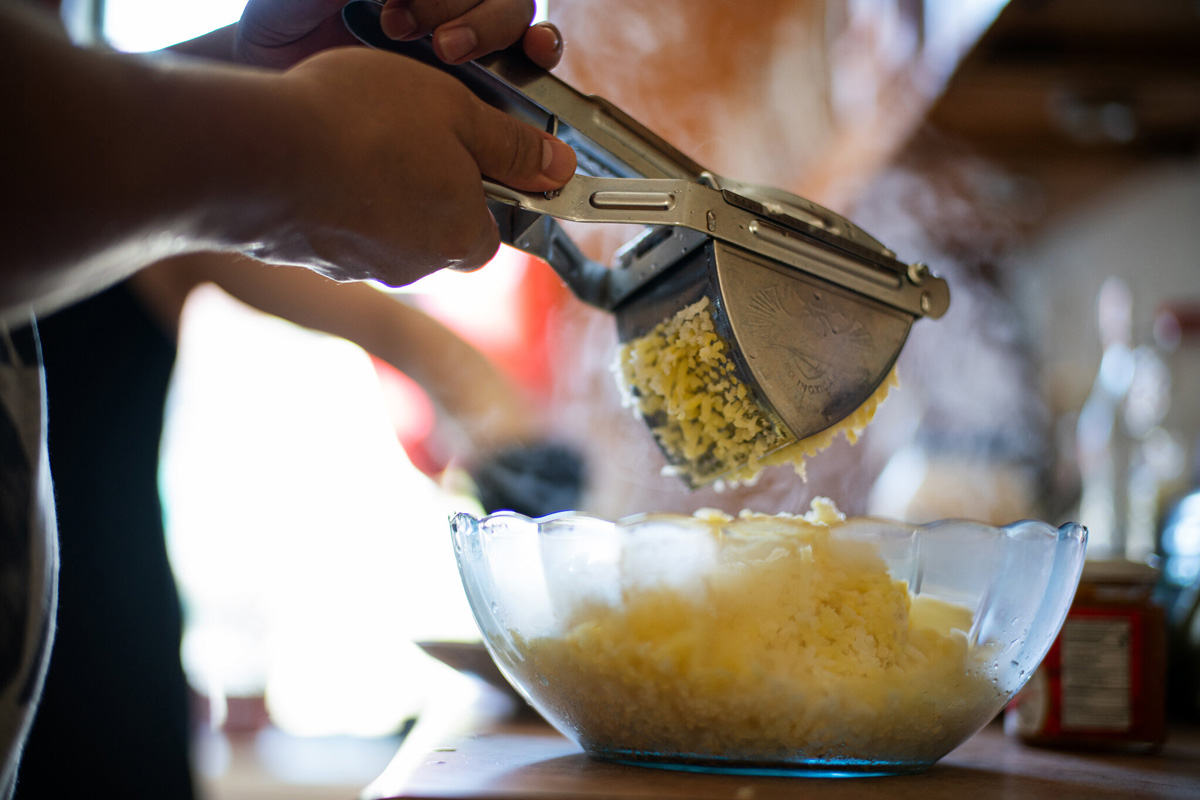
Days later, they swayed and bobbed to música criolla and Peruvian cumbia, two of their favorite music genres, as they cooked causa limeña: tuna between layers of potato. José used a special masher that he had bought at a market in Peru. The couple were in unison, a nice place to be after their earlier arguments about whether to go to the pantry.
They had their best conversations over meals. “When we are not together here, it’s not the same,” José said. “Talking, eating, it’s something really special for me.”
By August, José was among thousands of Americans who had landed jobs as temporary census data collectors. He was grateful but still worried. “It ends on October 24,” he said of his job.
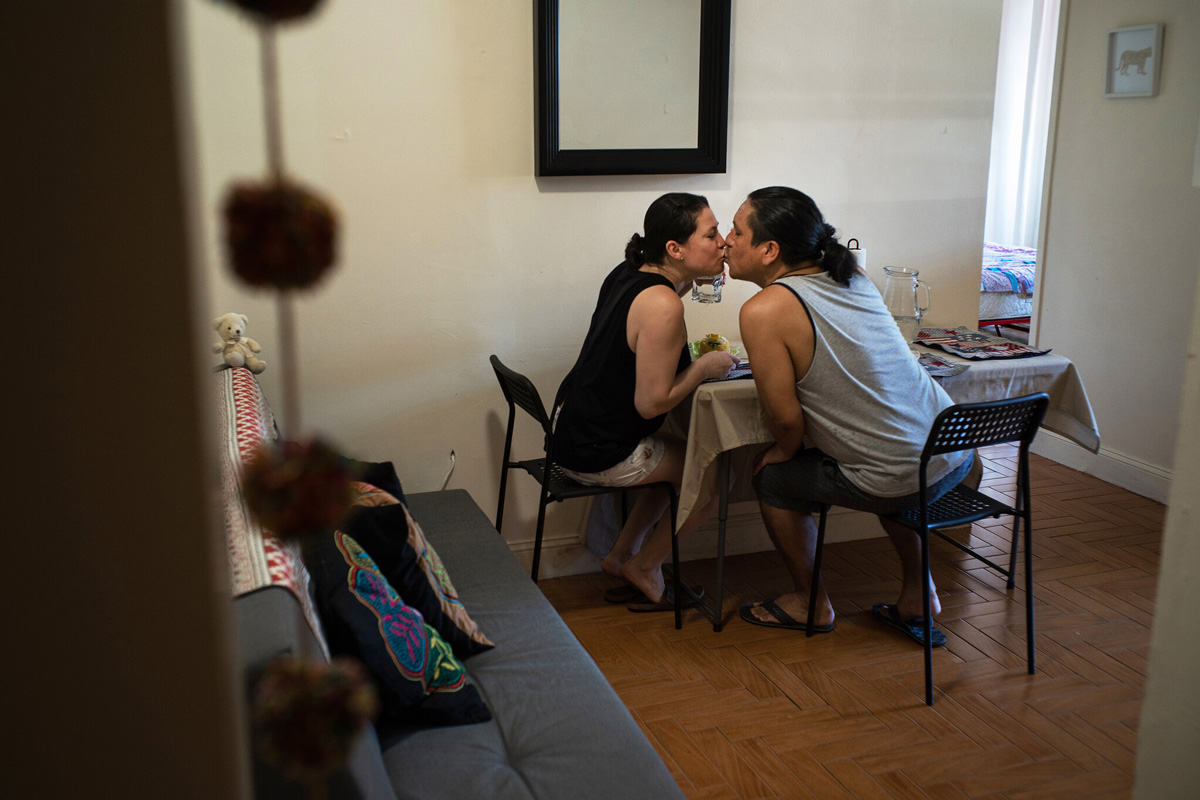
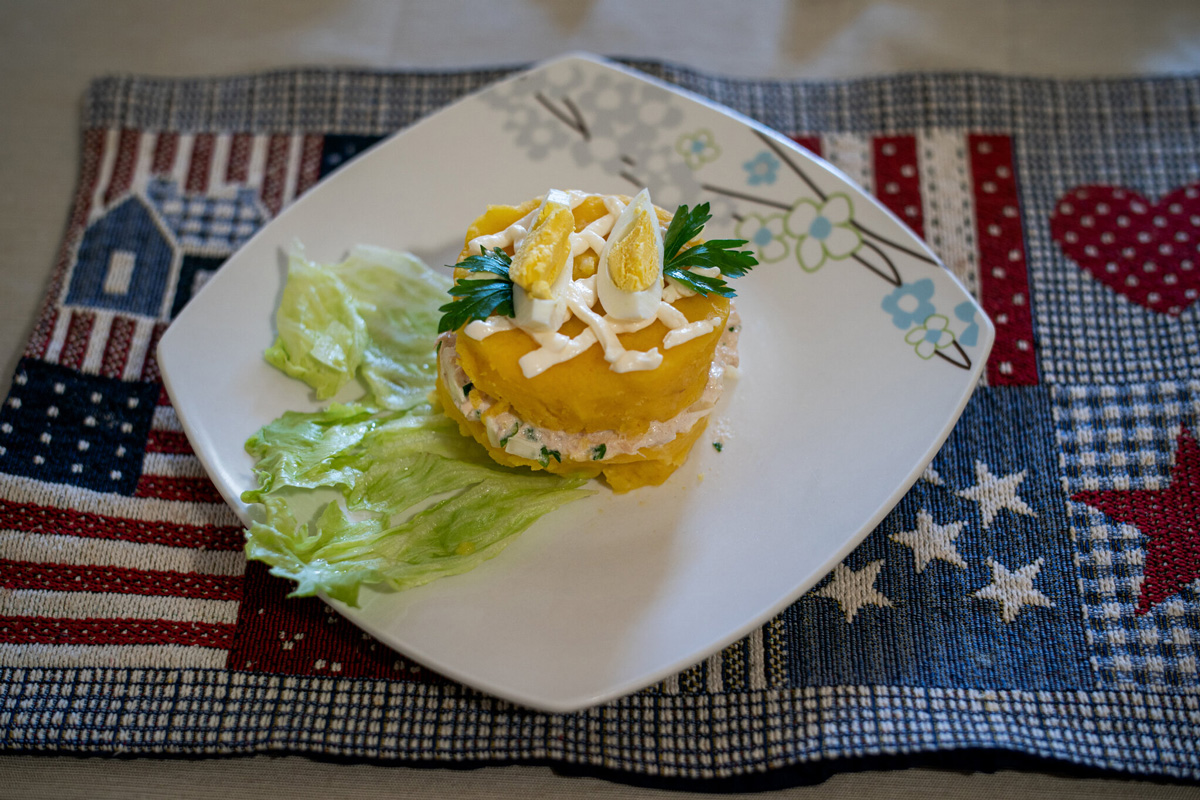
City Harvest, one of the largest emergency food distributors in New York, recorded nearly 12 million visits to the pantries in its network from March through August — about three million more than in the same period last year.
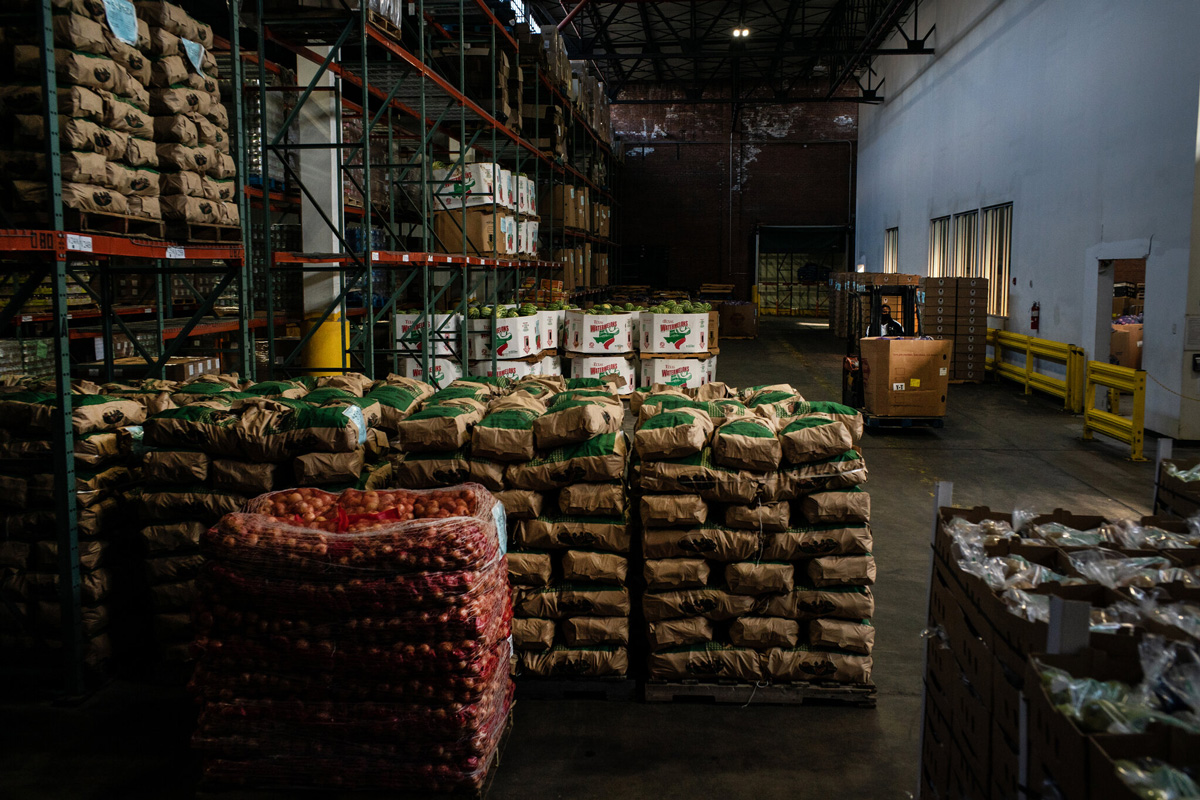
And BronxWorks, a nonprofit group that provides support services to individuals and families, served just under 500 people each month before the pandemic. It now serves nearly 4,000 per month.
Leslie discovers a new joy in cooking with her daughter, Trinity.
Highbridge, Bronx
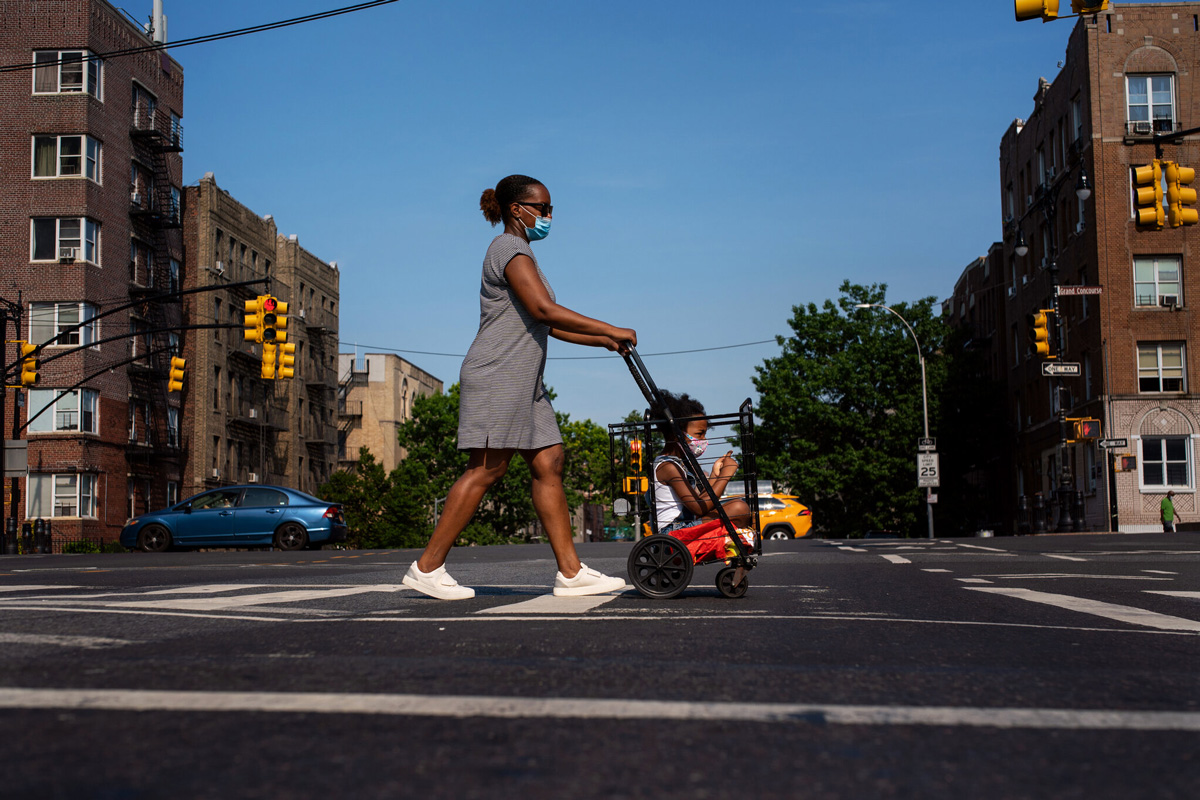
Leslie Johnson began going to a BronxWorks pantry in January. She works as a senior production editor for a book publisher, but was struggling to pay the rent and other bills.
When the pandemic began, she wondered if she should continue going: Maybe others needed it more than her, she thought.
“I didn’t want to take away from somebody else who might be in need,” she said. But, “when the pandemic hit, it became so much more — not an urgency, but a necessity.”
In addition to rent and utilities, Leslie said she had to pay her cousin to babysit her daughter, Trinity, 6, while she worked.
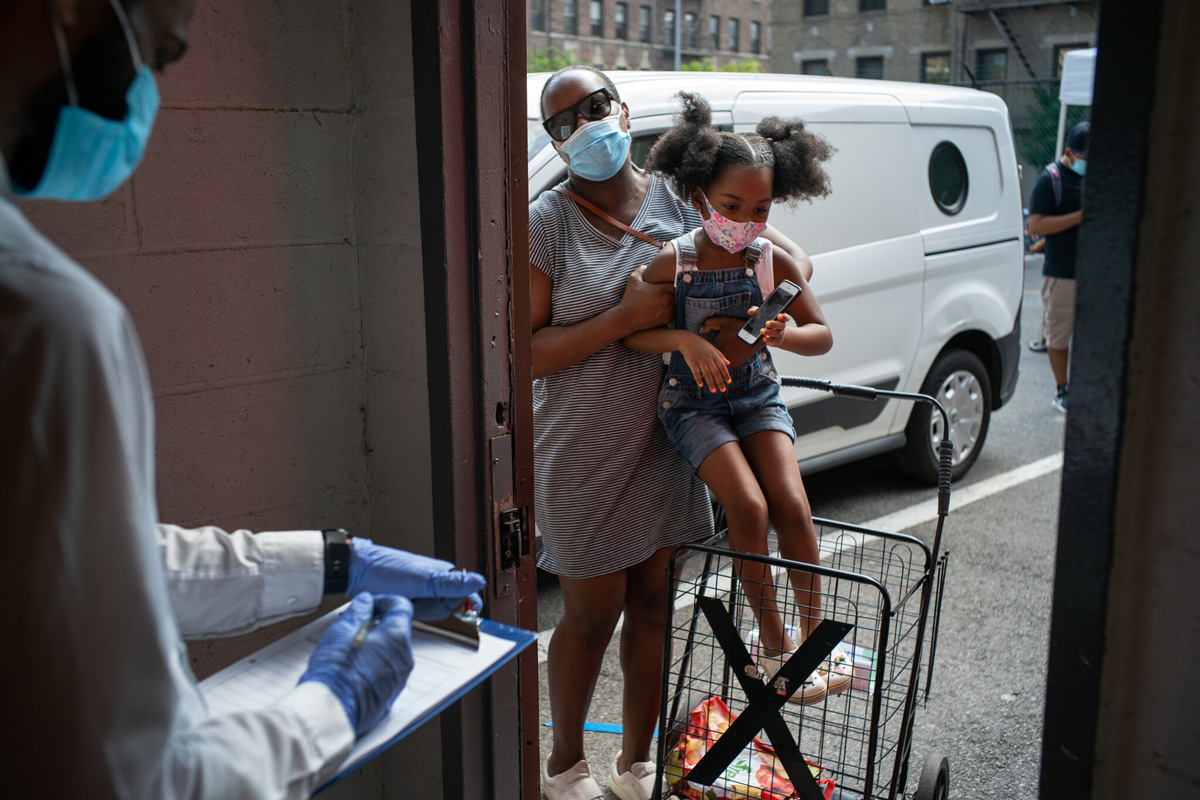
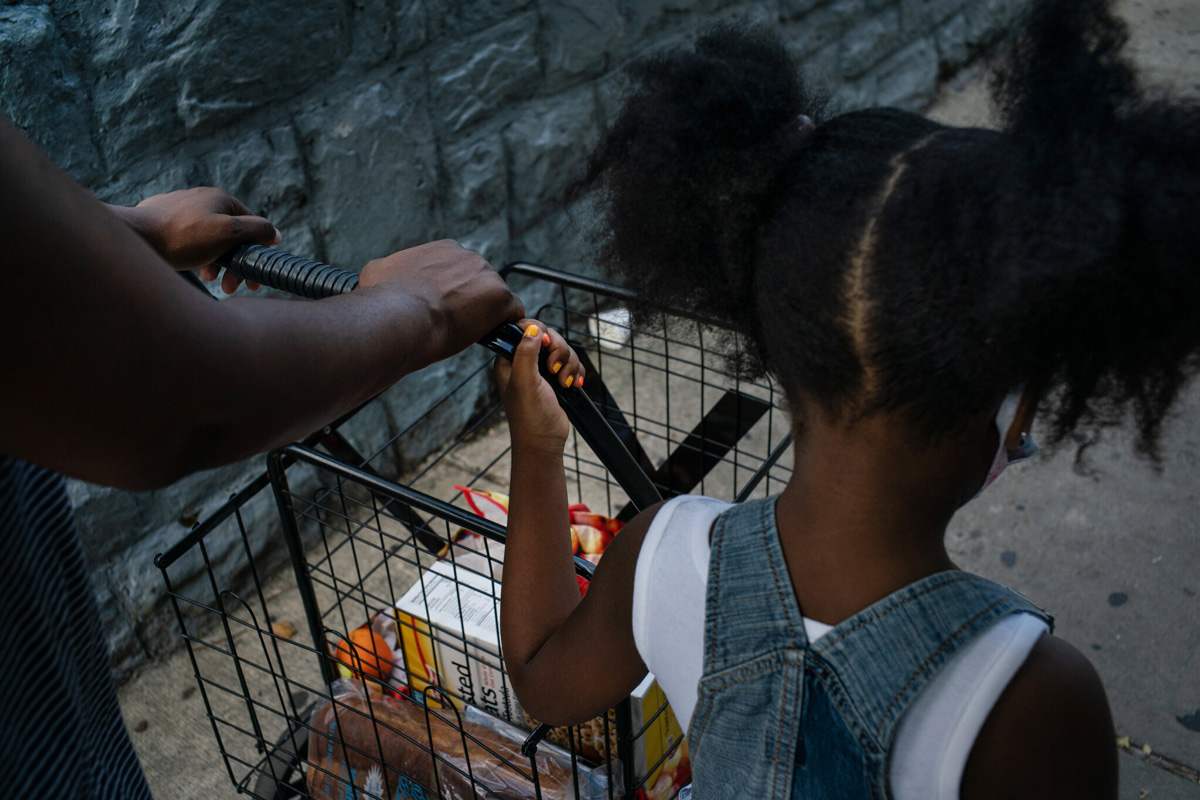
So Leslie kept visiting the pantry. One Saturday, Trinity climbed into the cart and contorted her body to fit, giving her a toddler’s-eye view of the masked people walking along Grand Concourse.
Leslie waited an hour at BronxWorks until she and Trinity were allowed inside. They sat on chairs set six feet apart. The dance of getting up and sitting down, inching closer to a large room where volunteers and staff members stuffed boxes with each person’s order, felt like a game of musical chairs for Trinity, who giggled as she bounced from seat to seat.
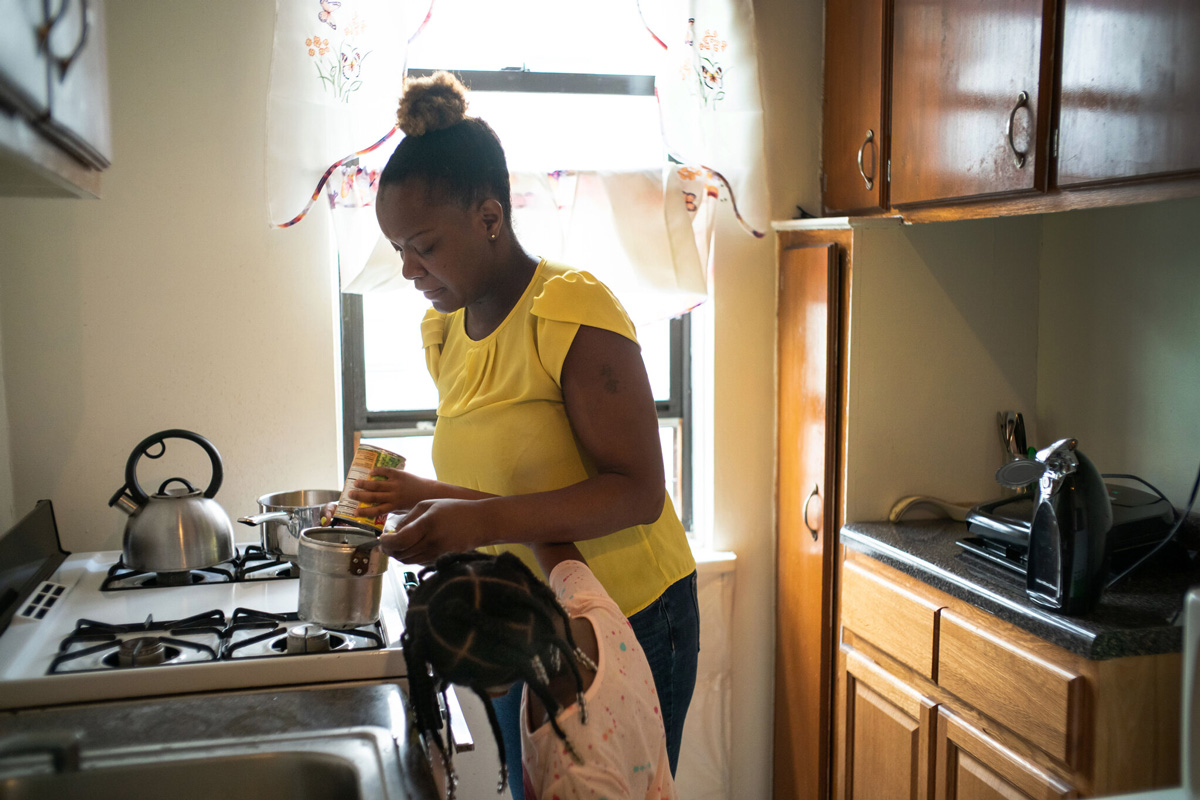
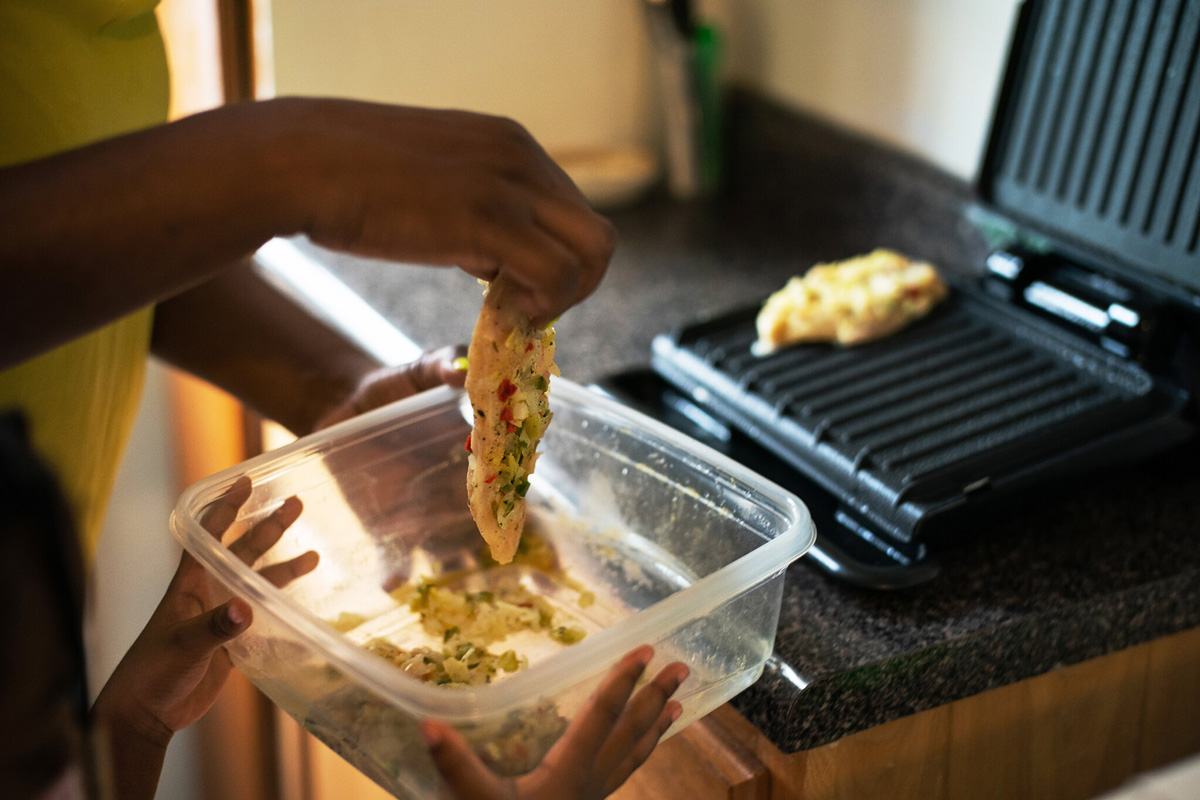
Days later, Leslie attempted to cook chicken cutlets from the pantry on her George Foreman grill, unsure of how long to leave them on.
“You’re burning it,” Trinity said, acting more as naysayer than sous-chef.
Leslie regretted never having learned how to make her mother’s West Indian dishes. “Before this, I was not a cook at all.,” she said. “It’s been giving me the opportunity to learn and to practice, and surprisingly, my biggest critic loves the food I’ve been making.”
Trinity helped to set the table with plates they bought at Sesame Place, the “Sesame Street” theme park in Pennsylvania, where they celebrated her second birthday. This year, she had a Zoom party.
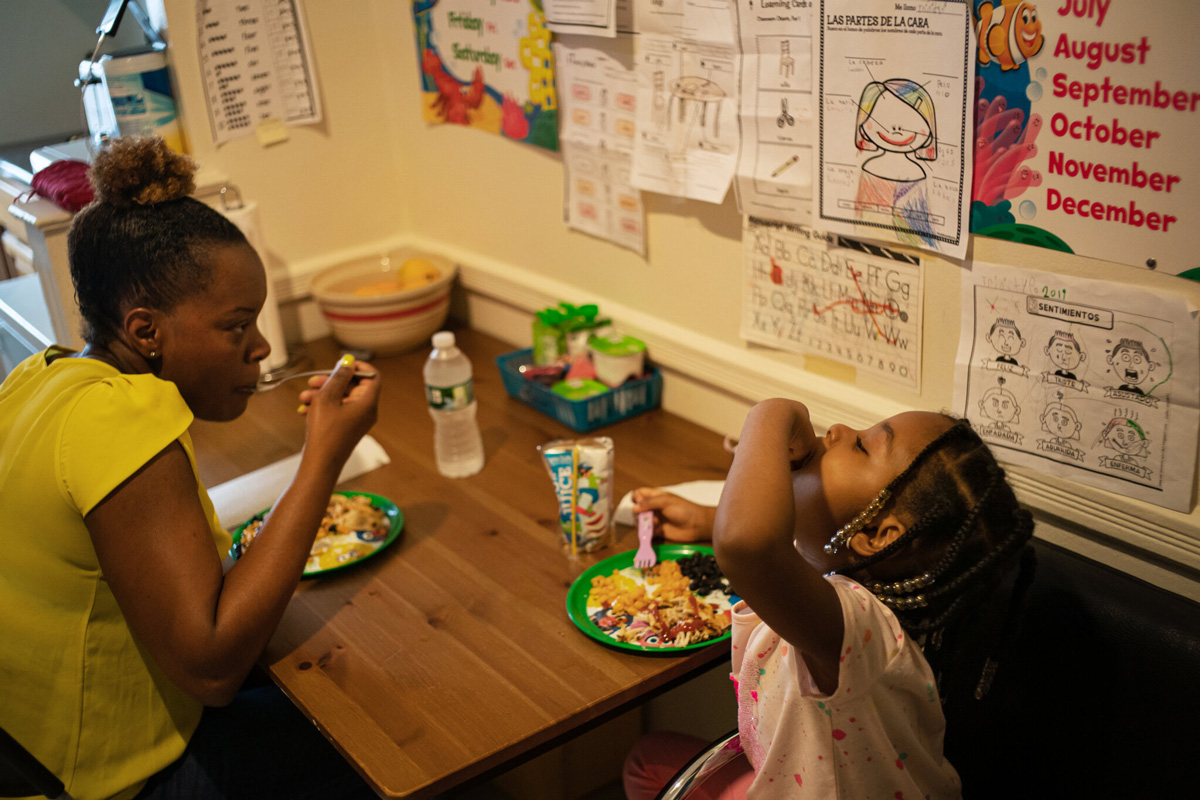
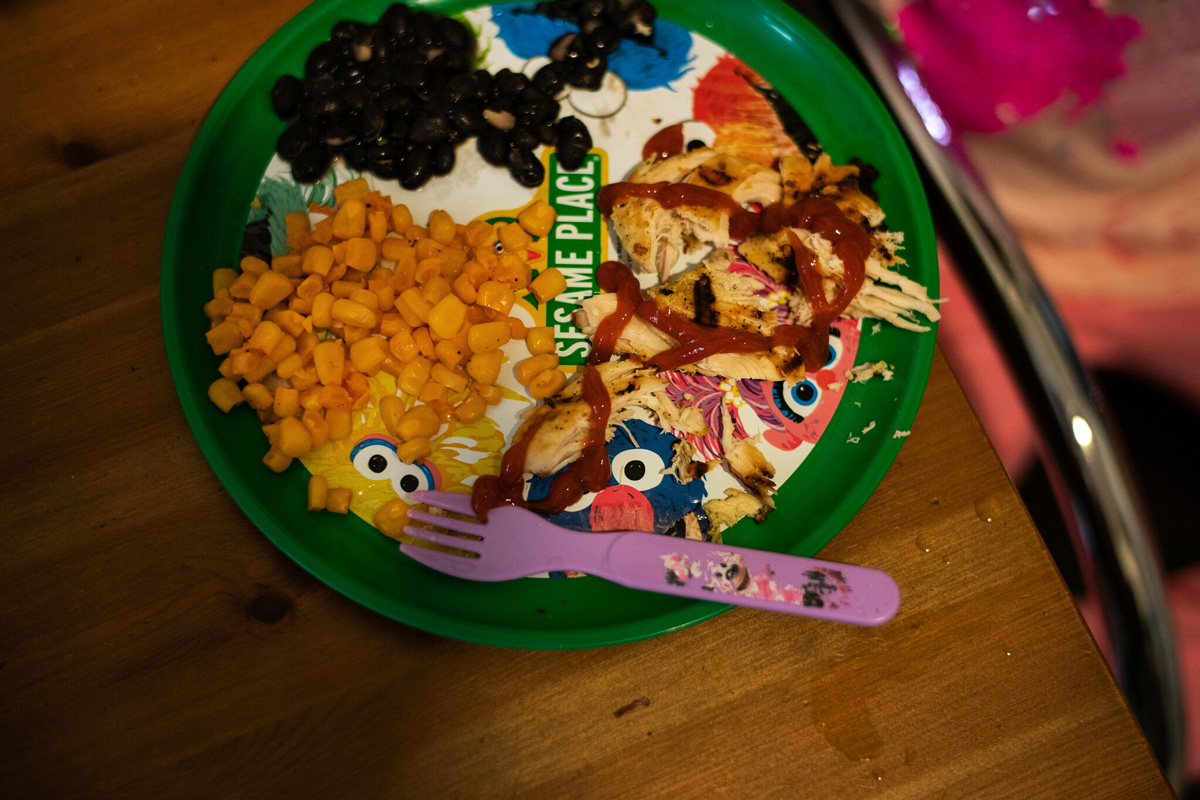
The crush of newcomers to food banks around the city came as hundreds of pantries shut their doors — about one-third of pantries and soup kitchens in the city closed for a period of time, or closed and have not reopened.
Most were shuttered because of a lack of volunteers, many of them older and fearful of contracting Covid-19.
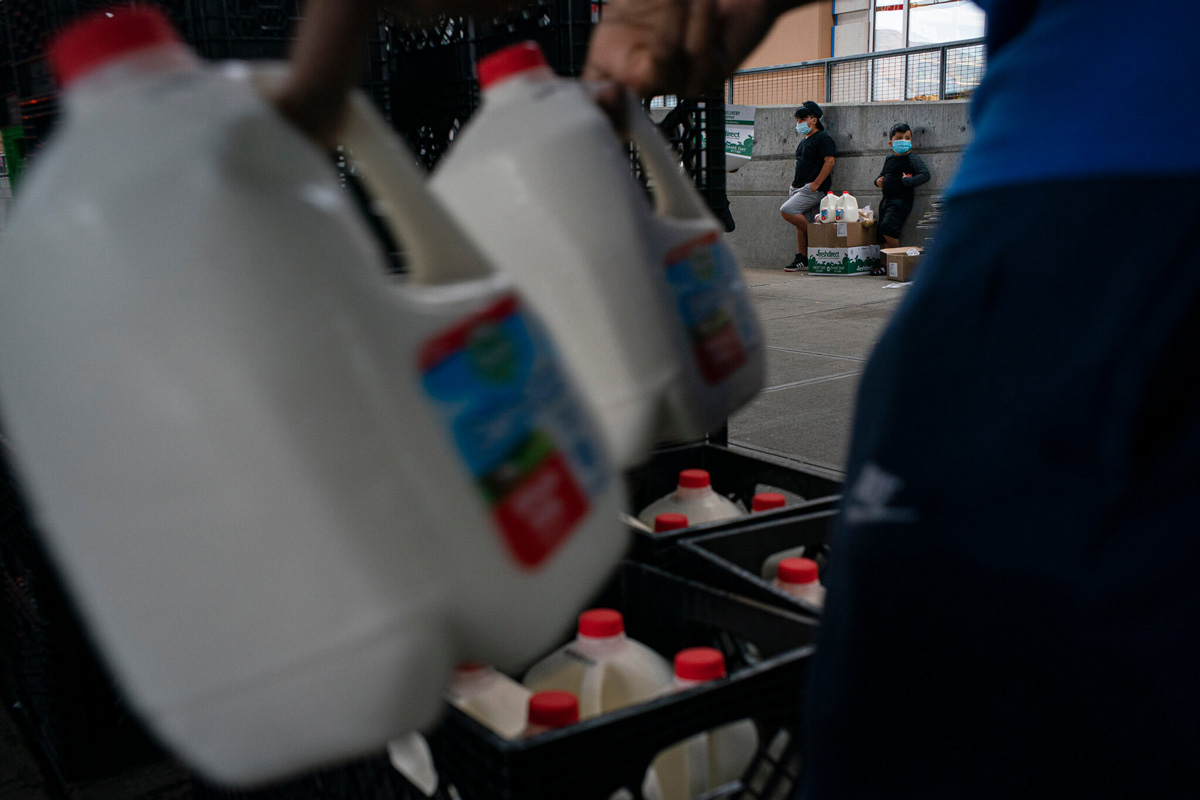
Like coronavirus infection rates, hunger has not spread equally. Most of the pantries that closed were in Queens and the Bronx, which have the highest unemployment rates in the city. Sunset Park and Flushing experienced the biggest spike in food pantry visitors, according to data from Plentiful, a food pantry scheduling app.
The matriarch of the Patel family keeps a pot of dal on the stove.
Flushing, Queens
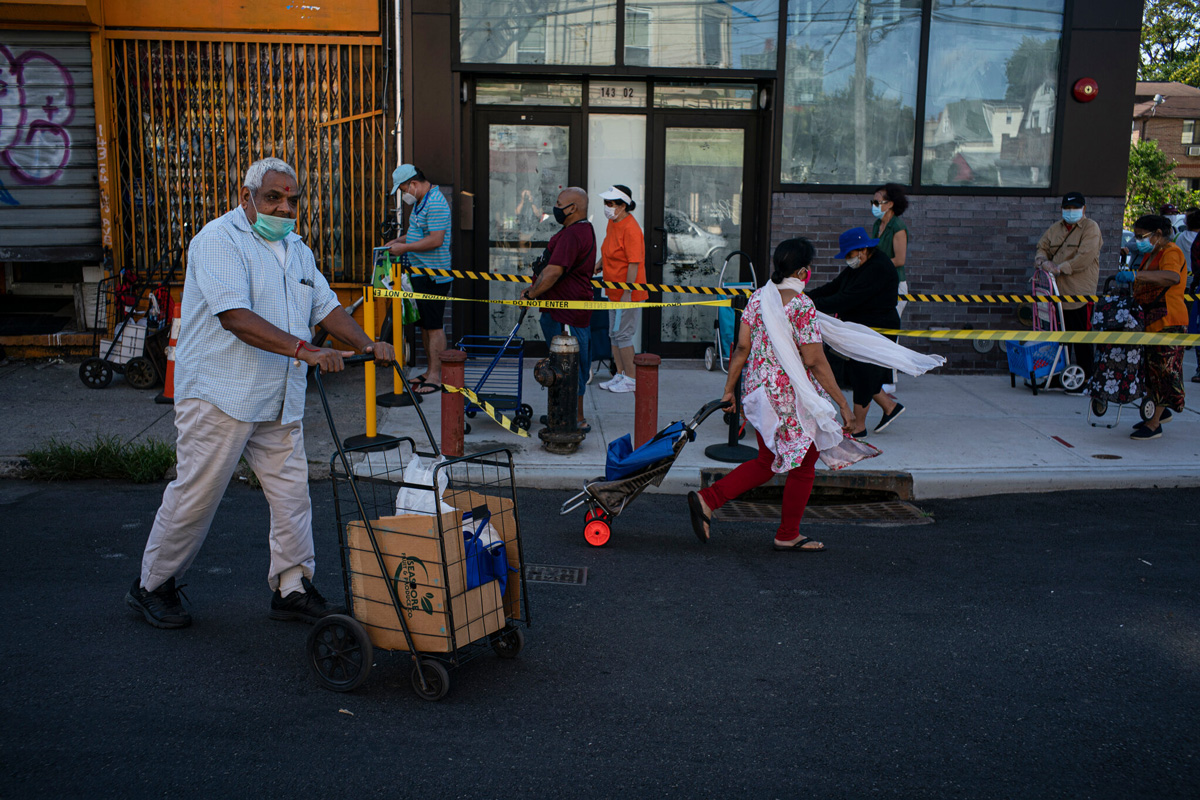
The Patels, a family of six living in a sparsely furnished one-bedroom apartment, went in and out of the kitchen for the dal that Vilmaben Patel, 65, learned to make by watching her grandmother in Gujarat, India.
Vilmaben and her husband, Natvarbahi Patel, sleep in the living room on twin beds with their grandchildren Mamta Patel, 21, and Darshan Patel, 18, who unfold cots at night. Their parents sleep in the bedroom.
Mamta said she hardly ever sees her father, who works delivering food for restaurants seven days a week.
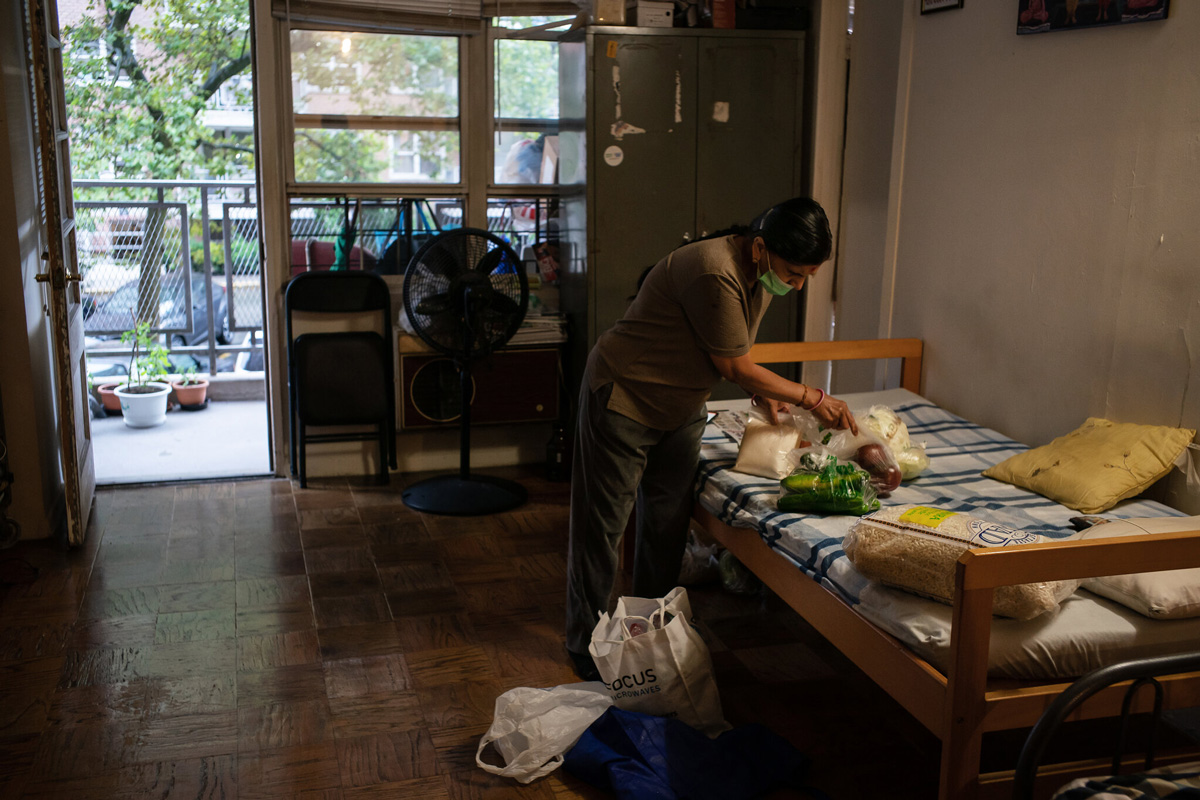

The family rarely eats together. But everyone knows that food is always ready in the kitchen. On Wednesdays, Natvarbahi walks to the pantry of the nonprofit South Asian Council for Social Services. Along the half-mile journey, he stops to pray outside BAPS Shri Swaminarayan Mandir, a Hindu temple.
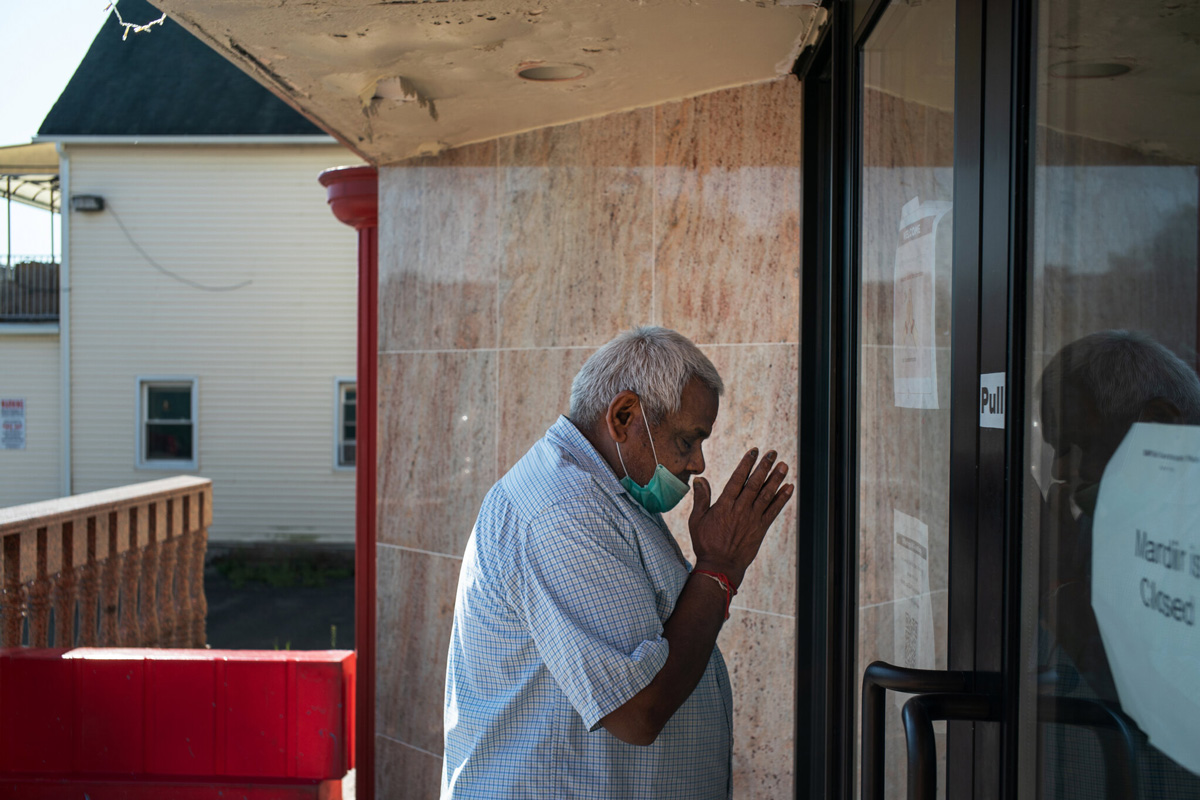
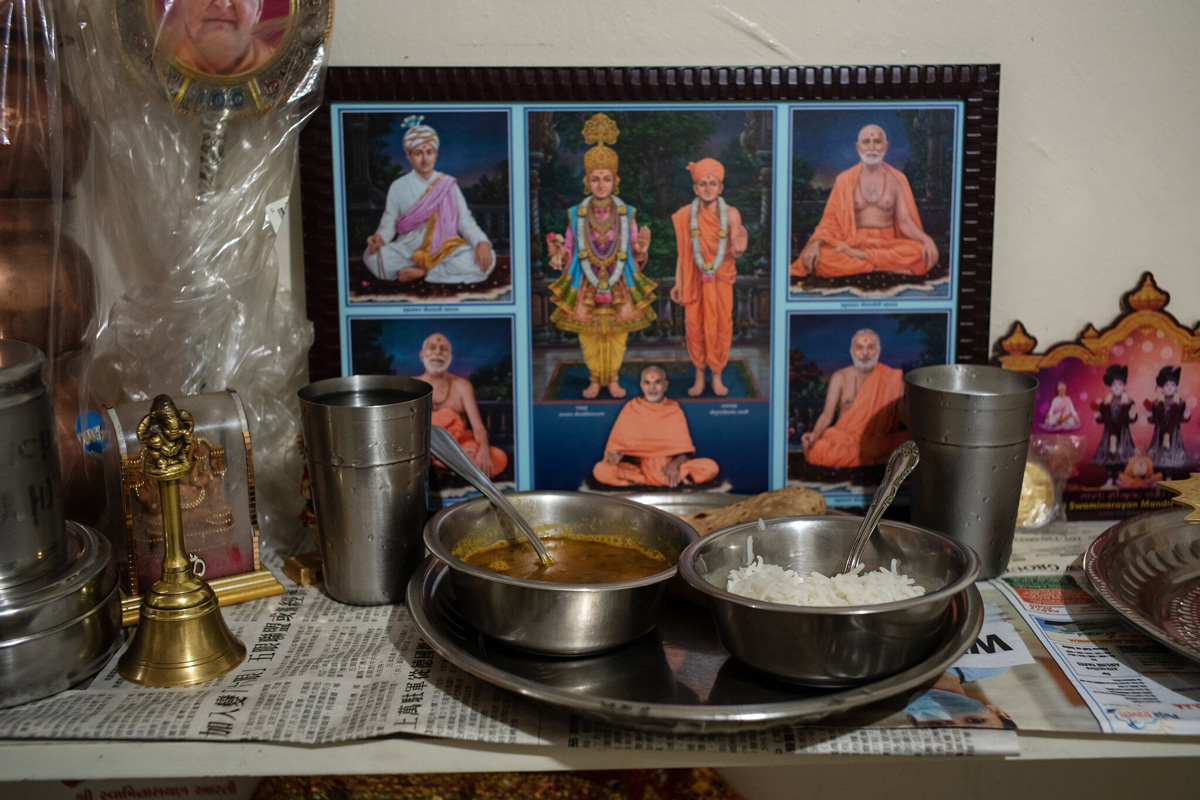
The workers at the pantry know him as a regular. The family first went to the nonprofit group for help with health insurance. Until the pandemic hit, people could go into the basement and select their own food, including ingredients specifically for dishes of South Asian origin. But since the lines have grown longer, the workers have switched to handing out prepackaged bags.
Vilmaben made the groceries stretch, stacking rice bags atop each other like sandbags keeping away a flood.
One Wednesday morning, alone in the kitchen, she stirred chole, a chickpea curry, as it bubbled in a saucepan atop the stove, and sang a bhajan, a Hindu devotional song, in Gujarati: “Today, Lord Krishna has entered the courtyard of my house. …”
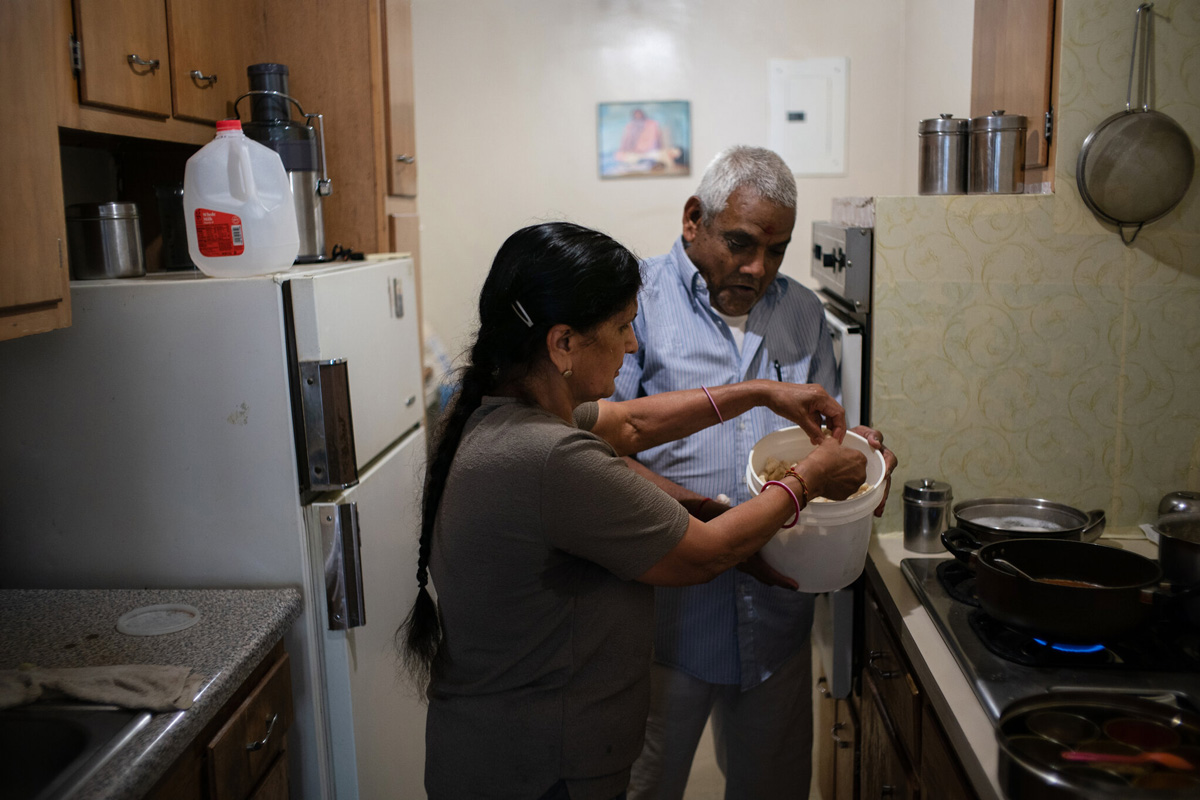
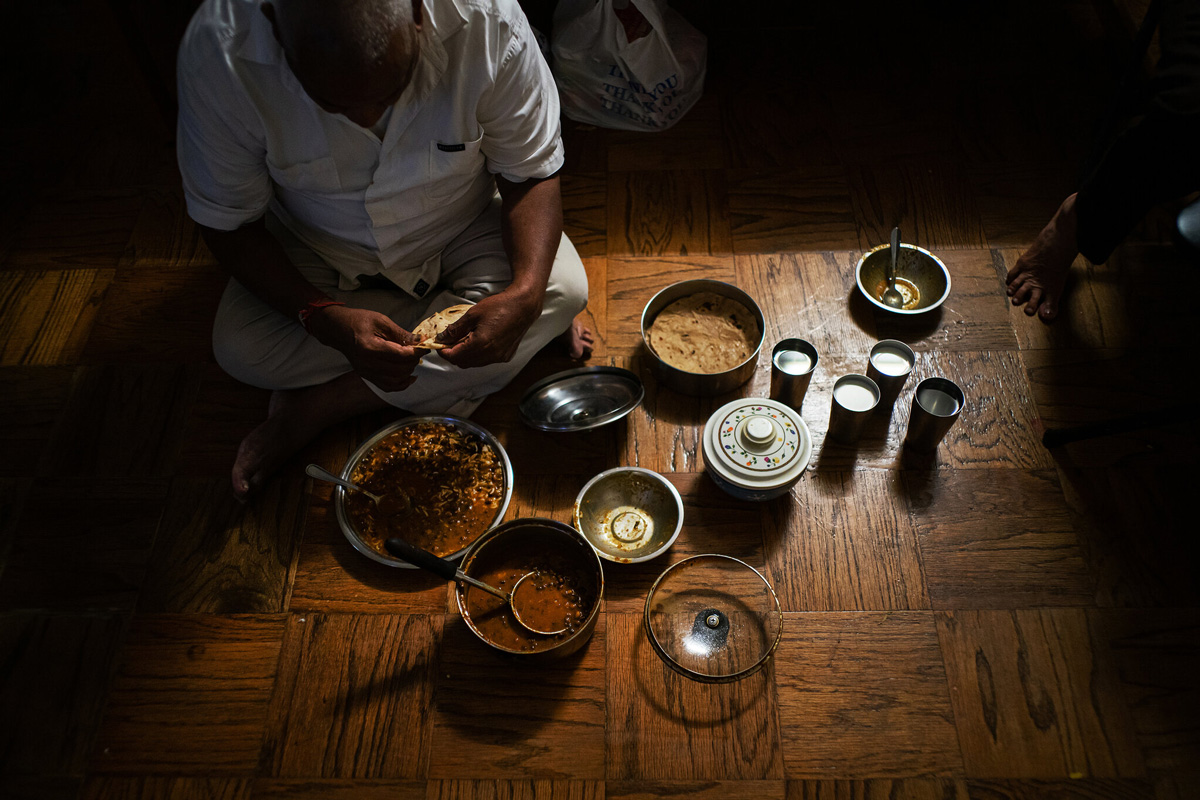
Some pantry visitors have discovered a love of cooking, or have been excited by new ingredients they would have never bought on their own. We asked people who had received food at Masbia pantries to show us what they made with the food they received.
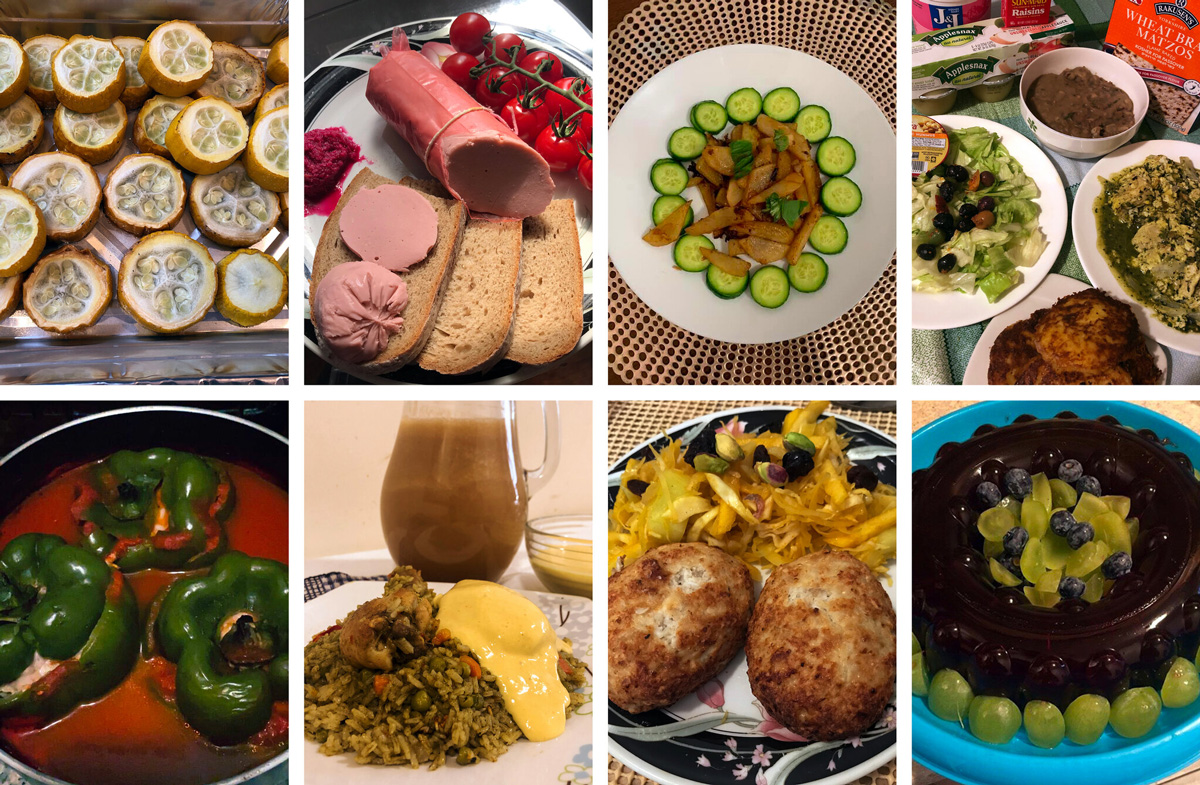
After a rough day, Yuliya finds beauty in feeding her family.
Midwood, Brooklyn
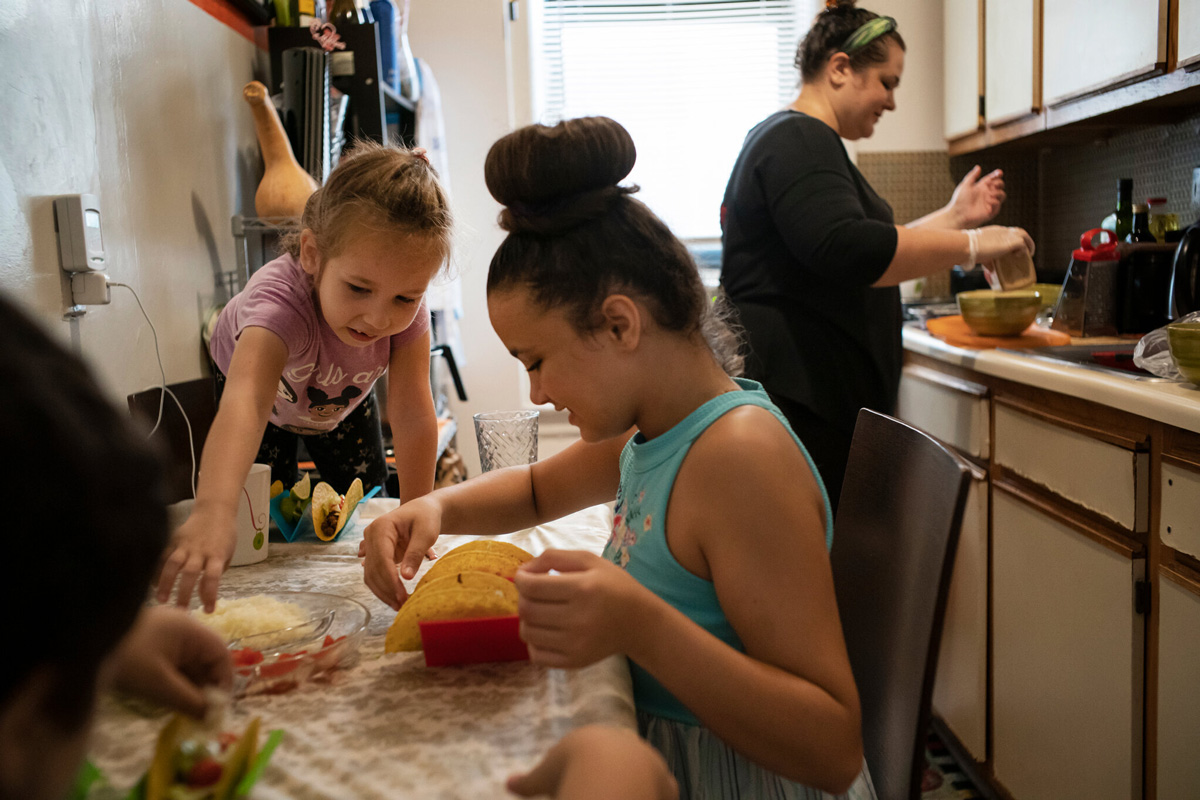
Yuliya Matveyeva’s kitchen gets little light, so she created her own sunshine, painting an orange stripe on a dull beige wall to match her orange cutting board.
Yuliya, who works in medical billing, believes that everything she makes should be beautiful: “Chicken and rice is not just chicken and rice. I prefer to make chicken with a little baguette and garlic and herbs. It’s the same thing, but …,” she said, never finishing her sentence. She blew a chef’s kiss.
She was worried about money before the pandemic and began going to the Masbia pantry a few blocks away from her apartment in Midwood last year.
She wanted to please her diners, including her 5-year-old daughter, Marie, a picky eater, and a friend’s children, who did not share her enthusiasm for fusing American and Belarusian cuisines. “They want tacos. I promised them a taco party,” Yuliya said, disappointed.
She made the beef tacos they expected, but also shrimp tacos, making a glaze for the shrimp by mixing smoked paprika, dry garlic and turmeric into butter.
The children’s laughter made up for a hectic visit to the pantry.
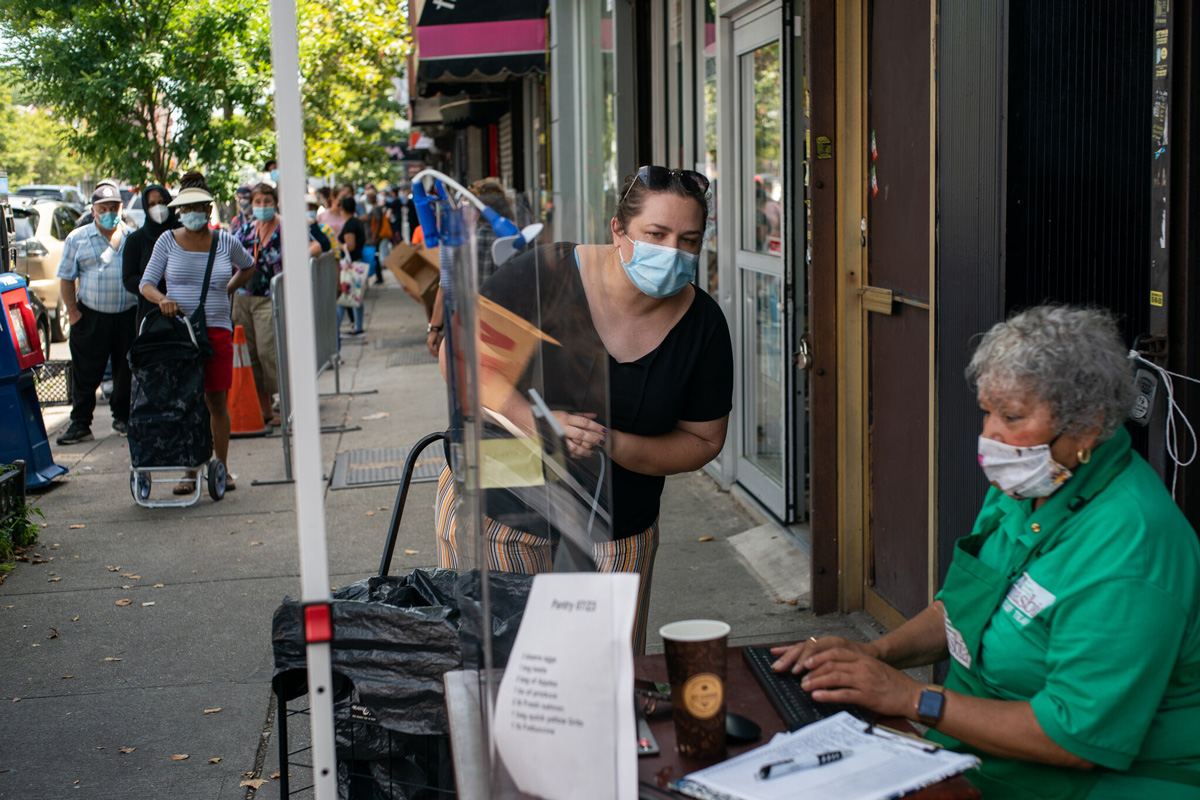
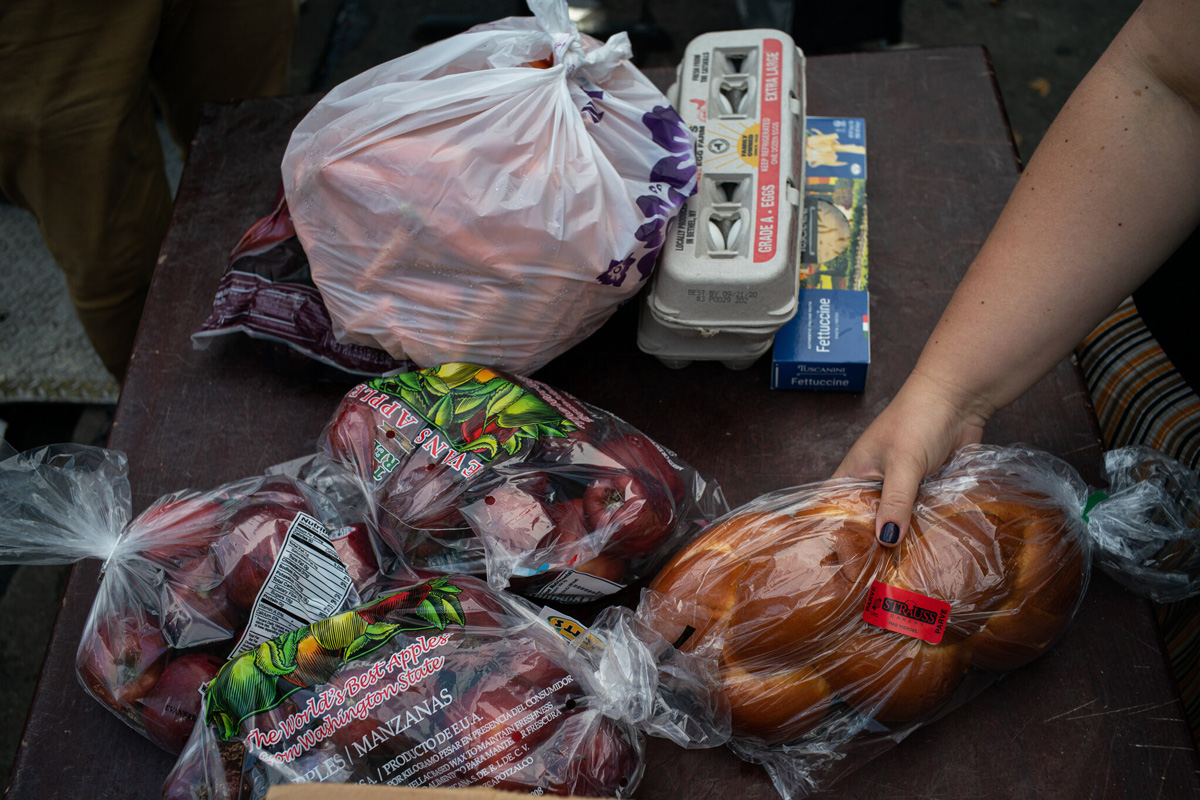
Some people were angry because Masbia had instituted an appointment-only policy, and they were being turned away. One person in line had called the police on a disruptive man in line, creating a commotion. People in the back of the line craned their necks to see what was happening.
“I heard everything — disrespect, racism, yelling,” Yuliya said.
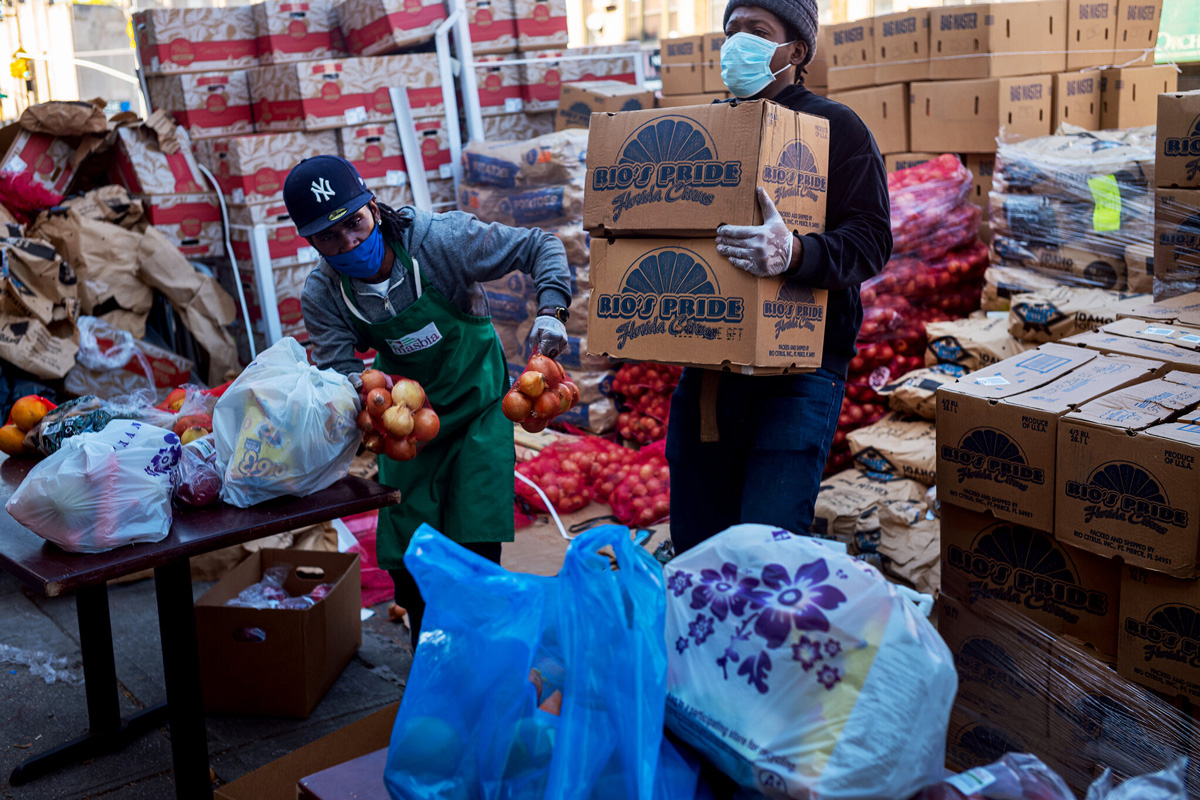
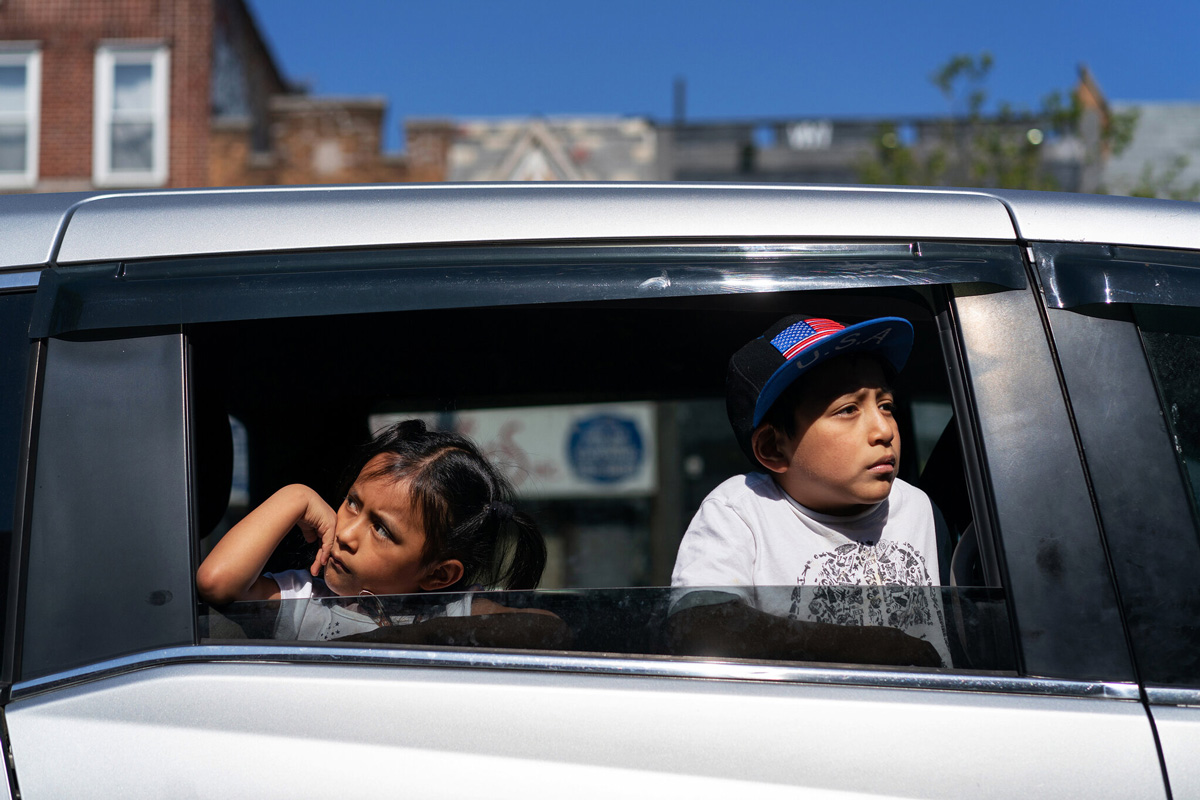
She got boxes of salmon, potatoes, beets, and other vegetables and fruit — so much that the load nearly reached the top of her cart.
As she began walking home, an older woman crouched near the pantry asked her in Russian, “Can you give me one box of food?”
Yuliya left with her cart half full.
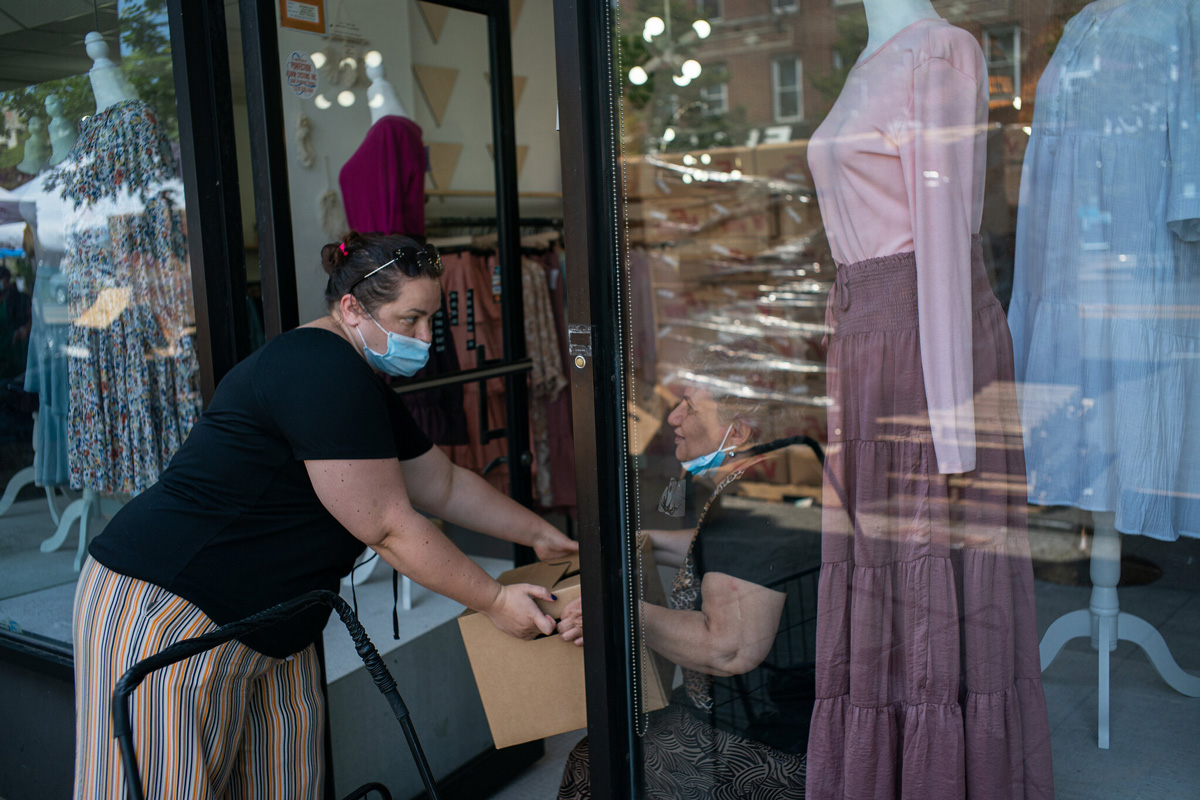
Here’s how to help hungry New Yorkers
In the seven months since the pandemic began, people made nearly 12 million visits to New York City food pantries, a 36 percent jump compared with the same time last year, according to City Harvest, a nonprofit. The New York Times asked pantry operators and people who have been going to pantries to share tips on how to help and how to get help if you need it.
How to help
Food is great, but money is better
Most large food pantries can buy food in bulk and pay a cheaper rate than retail stores charge shoppers, so your dollar will go further when donated directly to the pantry.
Money also allows pantries the flexibility to secure culturally appropriate food where and when it is needed.
Volunteering is still helpful
Many pantries and soup kitchens experienced a drop in volunteers when the pandemic began because their volunteers were largely older adults who were more vulnerable to the coronavirus. So volunteers are more essential than ever.
City Harvest is taking volunteers for its mobile markets and warehouse. To find a pantry or soup kitchen that could use your help, go to the New York Cares website.
If you donate food, donate in bulk
The Food Bank of New York City provides a tool kit on how to organize a food drive. For a smaller donation — under 400 pounds — find your neighborhood pantry or soup kitchen to see if they can accept it.
City Harvest also runs an annual food drive in partnership with The Daily News, and until Jan. 22, you can drop off nonperishables at any firehouse or police station.
While food programs try to provide as much fresh produce as possible, for small-scale and sporadic donations, nonperishables (such as canned goods, cereal and juice packs) are easier for them to manage.
Donate now to the 109th annual campaign of The New York Times Neediest Cases Fund. All proceeds go to 10 organizations providing assistance to those facing economic hardship. Make a tax-deductible donation through GoFundMe.
Donate Now
How to access a food program
Make an appointment
Call 311 to find the hours and locations of your nearest food pantries and soup kitchens. Demand has been so great that Masbia, a nonprofit that operates three pantries, expanded last week to 24-hour service at all their locations.
Some providers encourage, and others require, visitors to make an appointment for a time to pick up your food in person, many through the app Plentiful. Several readers recommended taking advantage of this service.
Make sure to wear your mask to the pantry, and bring a cart or a bag to carry your haul in.
Plan in advance
The offerings at pantries change often. Call the pantry on the day you plan to visit, and someone might be able to tell you what they’ll be giving out that day.
The Food Bank of New York City reported that by weight, the food they distributed during the pandemic has been 40 percent fresh produce, 30 percent nonperishables, 20 percent meat and 10 percent dairy.
Some pantries can fulfill religious or dietary needs. For example, Masbia provides kosher food. Other pantries can provide culturally specific foods, such as one in Queens operated by the South Asian Council of Social Services.
Don’t be ashamed
The biggest roadblock to going to a pantry often has nothing to do with lines and logistics; it’s about how you feel.
Jenique Jones, senior director of program operations and policy at City Harvest, said that she hopes this pandemic makes the world more aware that emergency food needs aren’t limited to the poor or unemployed.
“People have all these misconceptions,” Ms. Jones said. “They need to understand that this network is here for everyone.”
Apply for food stamps
Your temporary need might grow more permanent. In this case, you can apply for food stamps, also known as SNAP, both online or over the phone, or many food pantries can also help you apply.
Not everyone is eligible for food stamps, but it’s best to apply to find out. You do not have to be a citizen to receive this benefit.
Read the original article HERE.
In the week of thanksgiving, the New York Times has created a carousel that leads to the story with basic facts of poverty in New York City including one of our ED Alexander Rapaport in quotes.
See the carousel HERE.




